NORMA KNOTTS SHAFFER: WEST VIRGINIA'S BEST KEPT SECRET
Calhoun County's Little Kanawha River Valley
By Norma Knotts Shaffer
From the beginning it was here, following the path of least resistance, carving a serpentine course to the ocean. With the coming of primitive man, this meandering stream we now know as the Little Kanawha River became inextricably entwined in the lives of the people who live upon its banks. Normally a placid inland waterway, prolonged rains or heavy thunderstorms often turn the Little Kanawha into a raging torrent, resulting in loss of life and property.
Since the first coming of man to the Little Kanawha River valley, and continuing well into the twentieth century, the river was the highway into and out of the area. It was used by the red man during their sojourn here, and by the early settlers who established homes in this region. As the area became more heavily populated, the Little Kanawha became a commercial highway, the avenue by which needed goods were imported into the area and products, many of them depleteable resources, were exported.
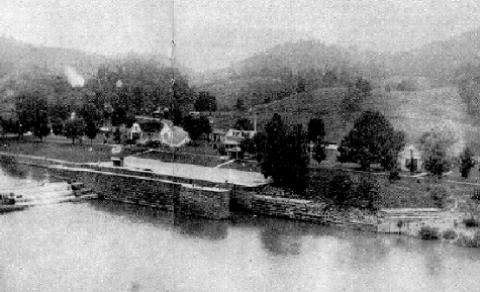
Lock Number 5 at Burning Springs
In the late nineteenth century a series of locks were built in Wood and Wirt Counties, creating "slack water" for steamboat traffic up the river as far as Creston. But with the decreased depth of the river above that point, overland transportation, which was both expensive and impractical, became necessary. During periods of wet weather, it was virtually impossible to move goods overland as existing roads were little more than trails which turned into mire and became impassable. The only alternative was to haul freight via a bateau or "push boat," which was propelled by using long "push poles."
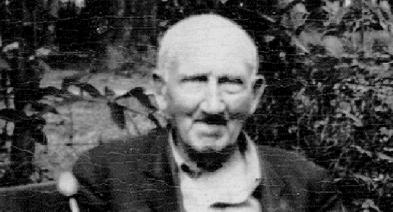
Captain Norm Williams, Pioneer Gasboat Builder
Around the turn of the century, Norm Williams, devised a new type of watercraft which was used for several decades to provide transportation on the Little Kanawha above Creston. In 1897, Mr. Williams, a Calhoun County native, purchased a bateau that had been used to transport freight up the West Fork of the Little Kanawha as far as Richardson. The new watercraft was built on the bateau which was later sunk, thus permitting the new craft, the first gasoline powered boat, to be floated.
This gas boat was powered by a four-horsepower stationary type engine located in the center of the boat. It was propelled forward and backward by looping two belts over a pulley with the belts running to the stern of the boat and across two idler pulleys thereby turning the paddlewheel. One of the belts had a half-turn in it, and the other was straight. By shifting the straight belt to an idle pulley attached to the paddle wheel by a chain, the boat could be made to move backward. When the belt with the half-turn was shifted to the idle pulley, the boat would move forward.
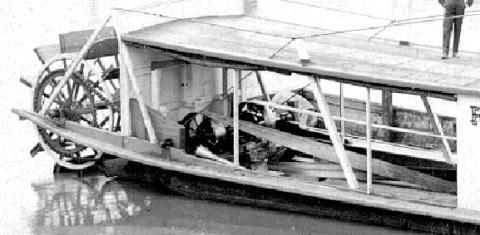
Pulley and Belt Configuration on a Gas Boat
Since this small light-weight craft required much less water depth, it was now possible to navigate the upper reaches of the Little Kanawha. Today it seems impossible that navigation existed upriver as far as Burnsville, or on the waters of Steer Creek as far as Lockney. However, it was only possible to reach the upper reaches of these streams during one of the many "mud rises" which occurred frequently, particularly during winter and spring. Goods were stored along the riverbanks and when the "rise" occurred, gasboats from downriver arrived upriver with imported goods, and the goods for export were loaded and transported downriver.

Primitive Riverboat
With the introduction of the gasboat, the Little Kanawha became a busy commercial highway for the area above Creston. The lumber and petroleum industries flourished during this period. Timber and wood products such as cross ties and barrel staves were exported via the river, equipment and pipe for the booming oil and gas industry were transported into the area, and carbon black, one of the area's primary products was transported out. Grantsville became the boat-building center of the Little Kanawha Valley and the area prospered during the riverboat era.

Hauling Oil Field Supplies on the Little Kanawha River
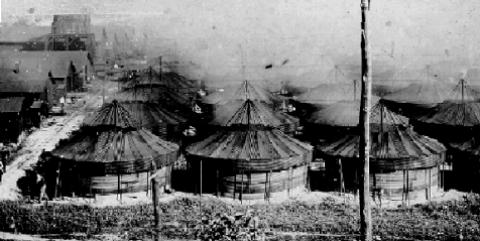
Godfrey L. Cabot Carbon Black Factory near Grantsville
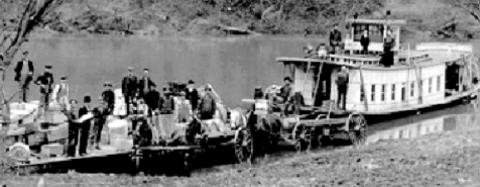
Unloading the Riverboat "Return" at Grantsville
Not only did the river serve as a commercial highway, it also served the citizens of the area as a means of public transportation. The trip to Parkersburg was a day-long journey, and it is not uncommon, even today, to find Calhoun County residents who remember riding a gas boat to Parkersburg. During World War I, men leaving to serve their country in the military were transported via a gas boat, and the boats also performed the service of delivering mail for the U. S. government. Many college students caught their first glimpse of Glenville Normal School from the deck of a gasboat.
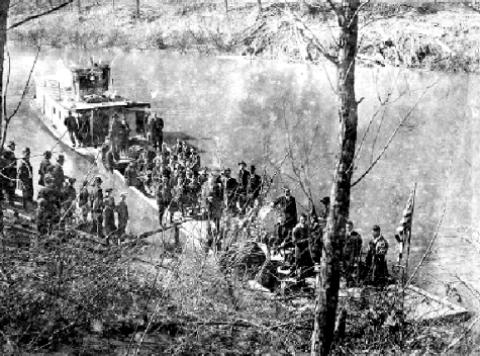
WW I Soldiers Leaving Grantsville Aboard the "Glenville"
With the coming of paved highways during the late 1920's and early 1930's, the use of the river as a mode of transportation declined and today it is difficult to imagine our river as having been anything other than the stream we know today. Route 5, Calhoun County's major east-west highway, follows the winding course of the river for much of the distance. A journey across this highway and along the Little Kanawha River, affords travelers a scenic route during any season of the year and offers Calhoun and the other counties through which the Little Kanawha flows an opportunity to market our greatest non-depleteable natural resource, the rich historical past and present scenic beauty of the Little Kanawha River Valley.